Almaden Quicksilver Mining Museum & Park
Sunday's field trip: Almaden Quicksilver Mining Museum and County Park
On Sunday D. and I went to the Almaden Quicksilver Mining Museum and Park. The mining museum was pretty cool. The docent was very knowledgable and I learned a lot of cool stuff.
Quicksilver is another name for the element mercury. It is found in a colorful red ore called cinnabar, and the hills south of San Jose have the biggest deposits of cinnabar in North America. The mining operation there was called New Almaden after the Almaden quicksilver mine in Spain, which had been the world's largest mercury mine at the time.
The New Almaden Mines were in operation from 1847 to 1976. This predated the Gold Rush, thus making it the oldest mine in California. It so happens that mercury is the primary reduction agent of gold and silver, so when the Gold Rush happened the demand for mercury skyrocketed and the New Almaden Mines flourished. They played a major role in the economic development of California, since it did not have to depend on distant or foreign sources to process all the gold and silver being mined all over the territory.
Back in the day no one knew yet about mercury's extreme toxicity. To get it out of the ore they had to crush the rock and heat it up to something like 1000º, which released all kinds of poisonous fumes. Definitely hazardous work! Liquid mercury is very heavy and dense; a gallon of it would weigh over 100 pounds!
Here's a just little bit of the exhibits in the museum:
Mine detonators.
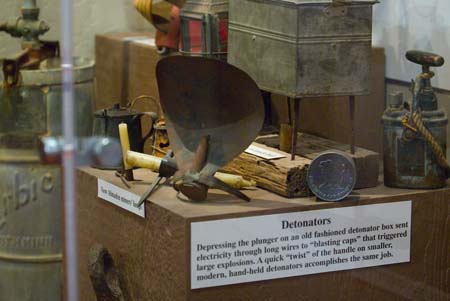
Patent medicines made with mercury. People didn't know any better back then.
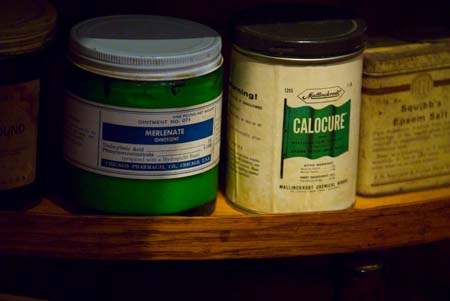
Then we went over to the northwest section of Almaden Quicksilver County Park. The park is 4,000 acres of grassland, chaparral and oak woodland habitats which are crisscrossed by several miles of hiking, biking and equestrian trails. It also has remnants of several different mines throughout the property (all mine entrances and adits are sealed off for safety, though). There is plenty of wildlife: deer, coyotes, mountain lions, bobcats, lizards, rattlesnakes and lots of birds. The park's steep hillsides, cool forests, open meadows and deep valleys were lovely to wander through.
Bridge detail over McAbee Creek.
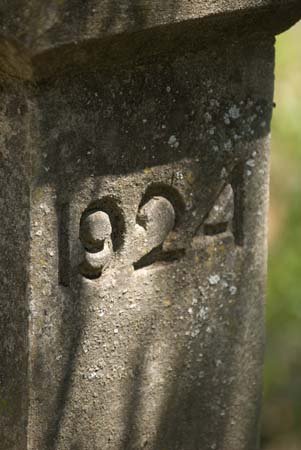
Turkey vultures kettling over Senador Mine Trail. It was a hot day there, and the turkey vultures were circling the thermals like bubbles rising in a boiling kettle. Hence the term "kettling."
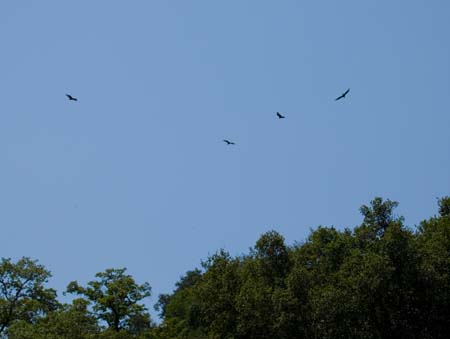
"El Senator Mine." Major typo, cast in bronze for all eternity!
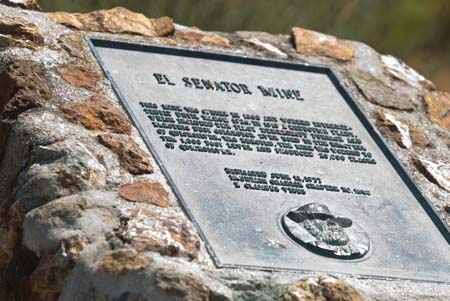
Senador Mine ruins.
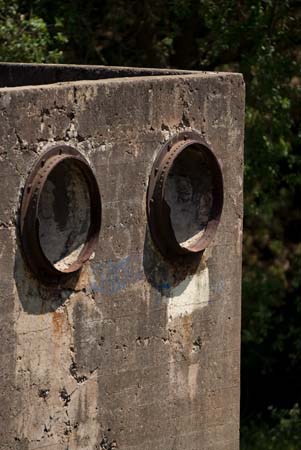
View from Senador Mine Trail across Santa Clara Valley toward Lick Observatory (teeny-tiny white blobs on the highest ridge) atop distant Mt Hamilton.
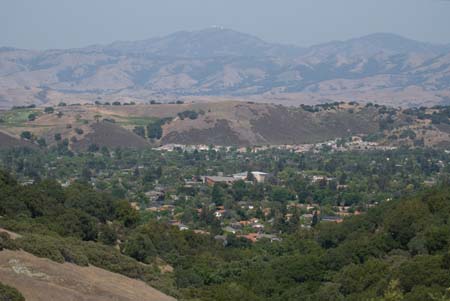
Funnelweaver web along trail. We saw hundreds of these in the grassland sections of the park. The webs fanned out in the grasses like landing platforms, then narrowed down into funnels that plunged into the funnelweaver spiders' lairs in the ground.
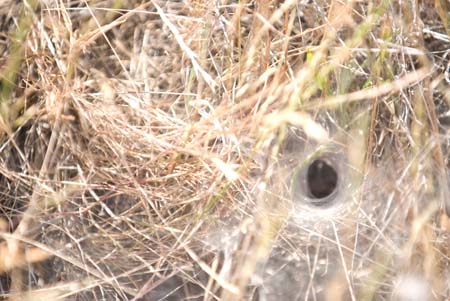
View from Guadalupe Trail.
Green grasses along Guadalupe Trail. These appeared to be the native perennial grasses that do not die off in the summer. This is what the California hillsides looked like before the European settlers arrived and brought their foreign annual grass species that die off and turn brown in late spring.
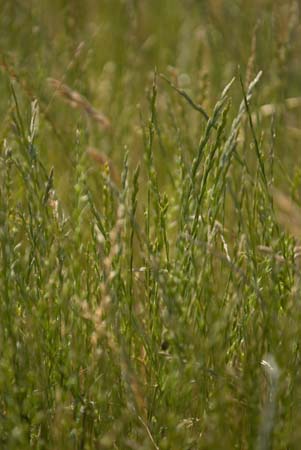
Colorful poison oak climbing real oak, Guadalupe Trail.
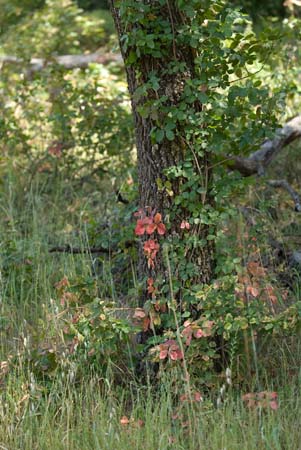
Lovely Ithuriel's spear.
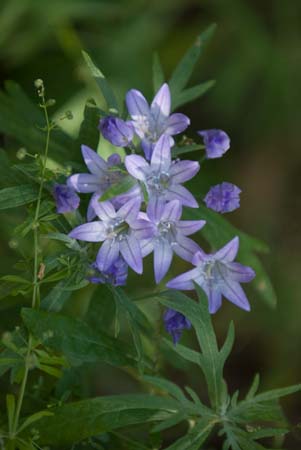
Delicate maidenhair fern in the oaks' shade, Guadalupe Trail.
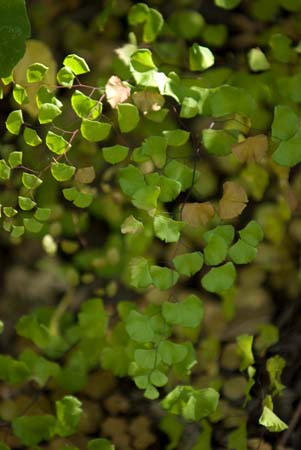
Buckeye tree.
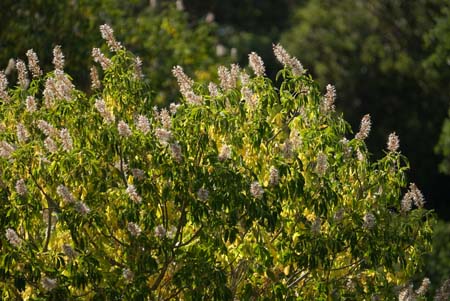
Grassy hillsides, Mine Hill Trail.
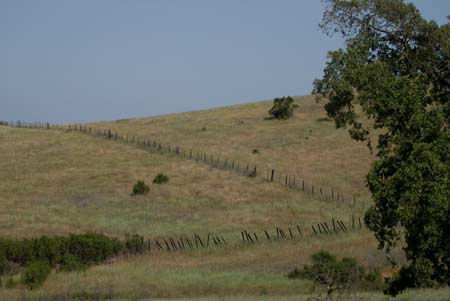
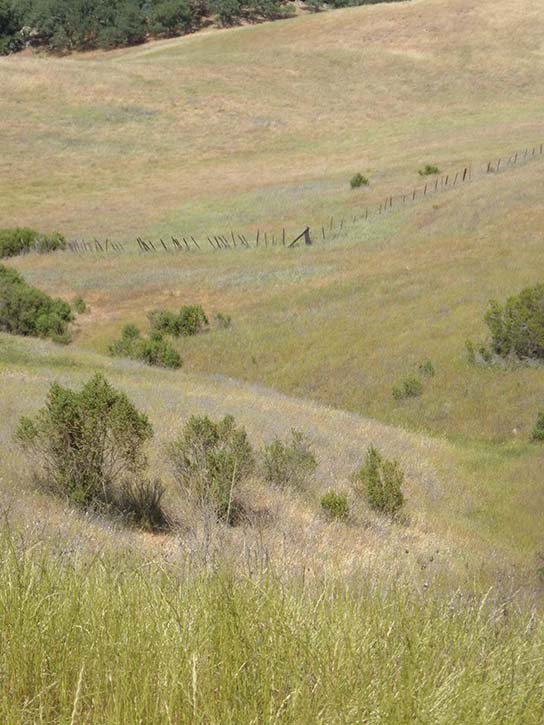
Shaded portion of trail through oak woodlands heading home.
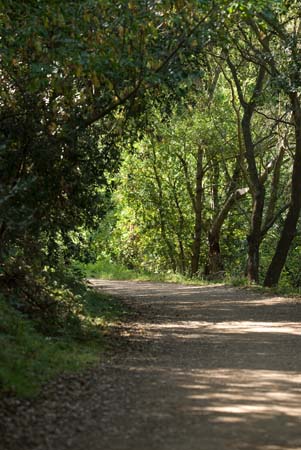
.
On Sunday D. and I went to the Almaden Quicksilver Mining Museum and Park. The mining museum was pretty cool. The docent was very knowledgable and I learned a lot of cool stuff.
Quicksilver is another name for the element mercury. It is found in a colorful red ore called cinnabar, and the hills south of San Jose have the biggest deposits of cinnabar in North America. The mining operation there was called New Almaden after the Almaden quicksilver mine in Spain, which had been the world's largest mercury mine at the time.
The New Almaden Mines were in operation from 1847 to 1976. This predated the Gold Rush, thus making it the oldest mine in California. It so happens that mercury is the primary reduction agent of gold and silver, so when the Gold Rush happened the demand for mercury skyrocketed and the New Almaden Mines flourished. They played a major role in the economic development of California, since it did not have to depend on distant or foreign sources to process all the gold and silver being mined all over the territory.
Back in the day no one knew yet about mercury's extreme toxicity. To get it out of the ore they had to crush the rock and heat it up to something like 1000º, which released all kinds of poisonous fumes. Definitely hazardous work! Liquid mercury is very heavy and dense; a gallon of it would weigh over 100 pounds!
Here's a just little bit of the exhibits in the museum:
Mine detonators.

Patent medicines made with mercury. People didn't know any better back then.

Then we went over to the northwest section of Almaden Quicksilver County Park. The park is 4,000 acres of grassland, chaparral and oak woodland habitats which are crisscrossed by several miles of hiking, biking and equestrian trails. It also has remnants of several different mines throughout the property (all mine entrances and adits are sealed off for safety, though). There is plenty of wildlife: deer, coyotes, mountain lions, bobcats, lizards, rattlesnakes and lots of birds. The park's steep hillsides, cool forests, open meadows and deep valleys were lovely to wander through.
Bridge detail over McAbee Creek.

Turkey vultures kettling over Senador Mine Trail. It was a hot day there, and the turkey vultures were circling the thermals like bubbles rising in a boiling kettle. Hence the term "kettling."

"El Senator Mine." Major typo, cast in bronze for all eternity!

Senador Mine ruins.

View from Senador Mine Trail across Santa Clara Valley toward Lick Observatory (teeny-tiny white blobs on the highest ridge) atop distant Mt Hamilton.

Funnelweaver web along trail. We saw hundreds of these in the grassland sections of the park. The webs fanned out in the grasses like landing platforms, then narrowed down into funnels that plunged into the funnelweaver spiders' lairs in the ground.

View from Guadalupe Trail.
Green grasses along Guadalupe Trail. These appeared to be the native perennial grasses that do not die off in the summer. This is what the California hillsides looked like before the European settlers arrived and brought their foreign annual grass species that die off and turn brown in late spring.

Colorful poison oak climbing real oak, Guadalupe Trail.

Lovely Ithuriel's spear.

Delicate maidenhair fern in the oaks' shade, Guadalupe Trail.

Buckeye tree.

Grassy hillsides, Mine Hill Trail.


Shaded portion of trail through oak woodlands heading home.

.